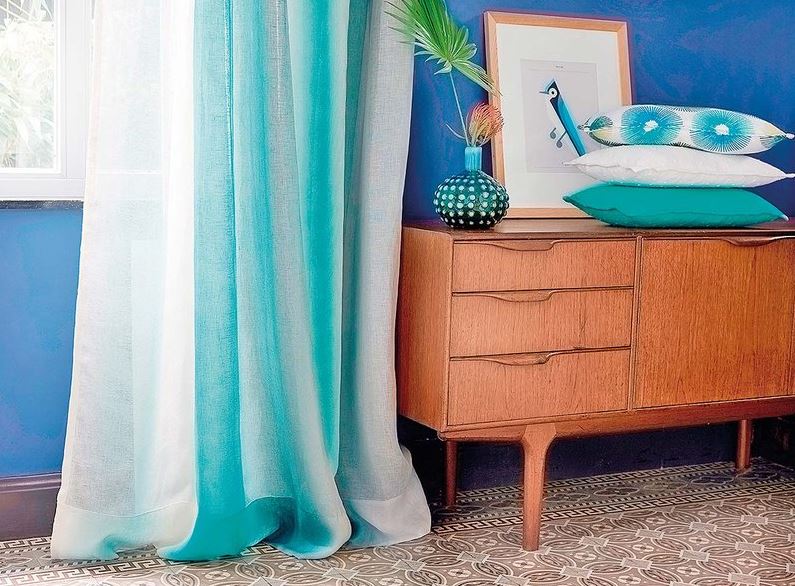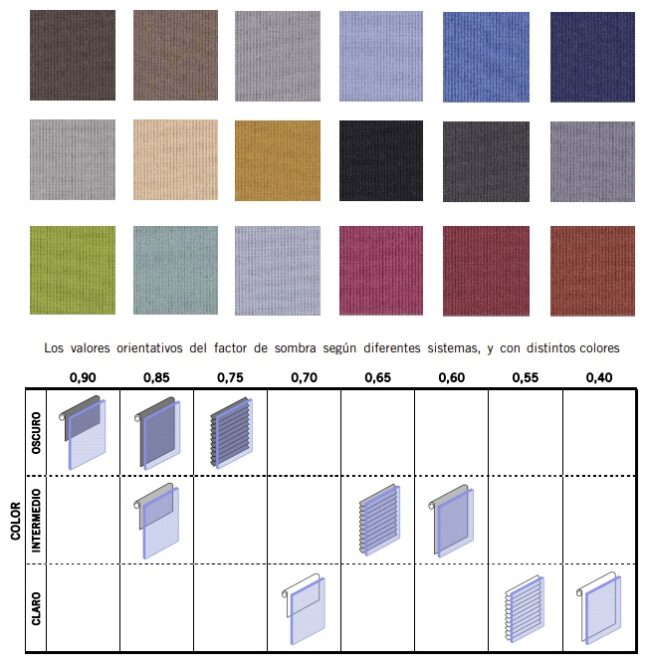-
Phone Number
-
Email Address
Striped fabrics, with geometric drawings, prints bold, discreet, with warm, cold, dark colors…etc. We have a whole range to dress the house with different fabrics for the home but first we must recognize all its characteristics to understand the world of textiles in the home .
Understand fabrics for decoration , the different types of tapestries or the world of curtains is a need to know
Through the weaving industries the fabrics are made by joining fibers and threads together different mediums, finishes, colors, materials and processes of artisanal or industrial way. Distinguishing between them is a difficult choice when practicing decoration with fabrics when the different features, so let's go over some key points of interest.
Content menu:
Before fibers of artificial origin such as polyester or nylon which are widely used in the industry of the fabrics for decoration , there were those of animal origin such as cotton or linen that were the most used in the 20th century for the manufacture of fabrics.
Some materials have been used throughout history. history to manufacture textile fabrics as in the time of the Crusade who used byso (very fine textured linen) or in China more than 6000 years ago and which used hemp for its manufacture.
We want to contribute the following video about a factory traditional textile to realize that behind all cloth there is a complex manufacturing system…
Great inventors developed innovative ideas about the textile through the years using different technologies like the Frenchman Joseph-Marie Jarcquard, invented a loom with punched cards in 1801, Wasimoto Tajima who invented the first embroidery machine in Japan in 1962 or Andrés Murillo who use the fabrics as carpeting or upholstery in the home in 1996.
In the manufacture of ecological fabrics , organic fibers obtained from cultivation without fungicides synthetic, pesticides or inorganic fertilizers so They fully respect the environment.
Among the genres that compose it, they have two types of fibers: such as natural ones of animal origin (llama, cashmere, silk), vegetable (Manila, hemp, cotton). And artificial, with regenerated fibers (viscose), synthetic with compounds chemicals (polyester) or minerals (asbestos).
Certification through textile ecolabels , We are talking about Made in Green. In Europe there are certifications through the Textile Technological Institute, the AITEX (Innovation Textile and Laboratories).
These guarantee that the textile fabrics that make up the products covered by their certification have been made through processes free of harmful substances to the health of those who use them, who have a character of environmental sustainability and that respect the workers who make it.
Although we have a varied range in the classification of fabrics and types of fabrics , composition and cleaning. Among the different tissues, a distinction is made between its composition or raw material that forms it.
The types of fabric for decoration represent a great field in terms of versatility, not only in material, but also by the technology with which it is manufacture. Some of the fabrics most used in the home attending to the cleanliness of the fabrics that are effects are:
And the classification of textile fibers we can see them in the following table:
| Classification of fibers textiles | |||
| 1.- Natural fibers | 1.1.- Animals | of silky glands | silk |
| wild silk | |||
| of hair follicles | wool | ||
| alpaca hair | |||
| from Angola | |||
| of camel | |||
| cashmere | |||
| goat | |||
| guanaco | |||
| call | |||
| otter | |||
| vicuna | |||
| 1.2.- Vegetables | of stem | linen | |
| hemp | |||
| jute | |||
| ramie | |||
| of the sheet | abacá | ||
| sisal | |||
| formio | |||
| esparto grass | |||
| of the fruit | coconut | ||
| cotton | |||
| other | banana | ||
| dunn | |||
| hennequén | |||
| pineapple | |||
| 1.3.- Minerals | asbestos | ||
| 2.- Manufactured fibers | 2.1.- Artificial | Casein | |
| Lanital | |||
| Viscose rayon | |||
| Acetate | |||
| Triacetate | |||
| Lyicell | |||
| Modal | |||
| 2.2.- Synthetics | Polyamide | ||
| Polyester | |||
| Acrylic fibers | |||
| Modacrylic fibers | |||
| Olefin fibers | |||
| Elastomeric fibers | |||
| Aramid fibers | |||
| Saran | |||
| Vinyl fibers | |||
| Vinal |
Using healthy fabrics in home textiles ensures the health of people by integrating fibers into its composition green instead of dyes with toxic substances.
I would like to clarify that both manufactured fibers (artificial and synthetic) as the natural ones have significant differences. The following scheme compares the two types of fabrics:
| Fibers manufactured | Natural fibers | |
| Textile examples | Fiberglass, acrylic, polyester, polyamide, etc | Cotton, linen, esparto grass, jute, wool, silk, etc. |
| Resistance | ✅✅✅✅✅ | ✅✅✅ |
| Visibility – Translucent | ✅✅✅ Depends on degree of opening (screen) or type yarn | ✅✅✅✅ |
| Perception of light | Natural and clear | Sparse and dim |
| Moisture, odor or dust absorption | No | Yes |
| Heat absorption | ✅✅✅ Depends on material | ✅✅✅✅ |
| Deformation | ✅✅ | ✅✅✅✅ |
| Maintenance | Minimal | Medium |
| Soft Touch | ✅✅✅ | ✅✅✅✅✅ |
| Adaptability decoration | ✅✅✅✅ | ✅✅✅ |
| For exteriors | Yes | No |
| Use in | Living room, dining room, kitchen, bathroom, bedrooms, office, etc | Living room, dining room, bedrooms (Not in rooms wet) |
| Effects on the environment | Yes (Except for biodegradable ones) | No |
| Economic cost | ✅✅✅ Depends on material | ✅✅✅ Depends on material |
The most substantial difference or, rather, the biggest problem important, we find it in natural tissues if they are Used in humid spaces or outdoors! They degrade! before! For example, screen blinds with polyester fabric or fiberglass can be used in the bathroom or kitchen, without problems.
Use a certain number of complementary patterns and colors in fabrics, you can create a harmony between the different areas of a room and give continuity to the stays in home. We leave a few tips and ideas to decorate with fabric:
Geometric designs, stripes, drawings and patterns solid colors can work together to brighten up a room stylish and attractive. Fabric manufacturers facilitate their coordination when designing groups of drawings, different fabric prints and complementary solid colors that can be used in any combination.
If you want to decide on the coordinations, it is advisable unroll the fabrics and compare them on both sides with light natural. Examine fabrics from various angles to judge the design and color compatibility.
Fabric rolls usually come in bundles with different dyes, be careful!... To avoid problems with slight color variations or differences in drawing printing, you have to buy the fabrics for a single roll creation. If we make a curtain or roller blind, it is essential! because of the size.
Check patterned fabrics to make sure they are printed on the straight thread, this is valid for the entire range of decorative fabrics that we can use.
You have to take into account the place where the fabric is going to be used and how it will blend with the other fabrics in the room. So you have to compare!
Most stores have clippings or samples of the fabrics that she sells for decor. Sometimes they let you take it for a period of time. short time, this option will give the opportunity to see the fabric in contrast to the others and to the light in the house, which can be very different from the one in the store.
If it is not possible to acquire a sample of fabrics complete, it is advisable to request a sample of the roll or buy a small piece before making the investment in a larger fabric cut.
Now it is time to give some useful advice in the choice of the colors on the fabrics , be useful for not waste time or spend money in a way coherent:


Lastly, and most importantly, consider preferences personal. It is a matter of applying these tips and your own tastes to choose the colors and designs of the fabrics that they beautify the home and reflect the personal style.
As a note, from the article on color in architecture you will see an App that will help you identify and save the color that you like in an easy way with a simple photo.
We want to emphasize how to calculate the fabric for curtains that we need in the house since in many cases it is literally a nightmare if we we made a mistake, so we added a video that explains it to the detail.
Thanks to technology we already have different tools and applications in the style of Textile Apps that we will help you organize or determine the best fabric for our room. The different applications textiles to decorate that we recommend and that have Spanish version are: